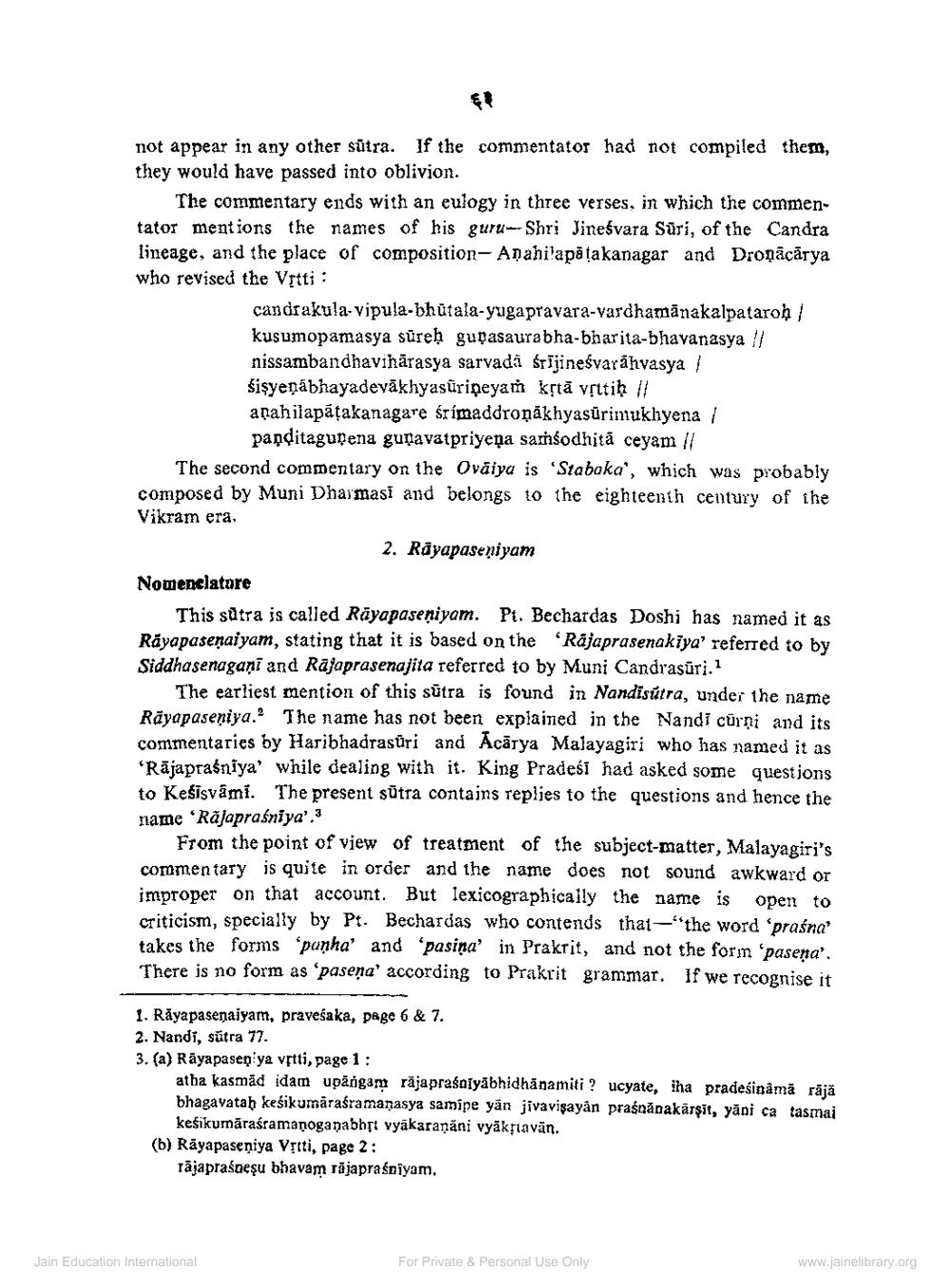________________
not appear in any other sūtra. If the commentator had not compiled them, they would have passed into oblivion.
The commentary ends with an eulogy in three verses, in which the commentator mentions the names of his guru-Shri Jineśvara Süri, of the Candra lineage, and the place of composition- Anahilapā takanagar and Droņācārya who revised the Vštti:
candrakula-vipula-bhūtala-yugapravara-vardhamānakalpataron / kusumopamasya süreh gusasaurabha-bharita-bhavanasya !! nissambandhavihārasya sarvada śrljineśvarahvasya / šişyeņābhayadevākhyasūripeyam kştā vsttih | anahilapāțakanagare śrímaddroņākhyasūrimukhyena /
panditagupena guravatpriyeņa samsodhitā ceyam Il The second commentary on the Ovaiya is 'Stabaka', which was probably composed by Muri Dhamasi and belongs to the eighteenth century of the Vikram era
2. Rayapaseniyam Nomenclature
This sutra is called Rāyapaseniyam. Pt. Bechardas Doshi has named it as Rayapasenaiyam, stating that it is based on the 'Rajaprasenakiya' referred to by Siddhasenagani and Rajaprasenajita referred to by Muni Candrasuri.1
The earliest mention of this sūtra is found in Nandisútra, under the name Rāyapaseniya. The name has not been explained in the Nandi cūrni and its commentaries by Haribhadrasūri and Acātya Malayagiri who has named it as Rājapraśniya' while dealing with it. King Pradeśī had asked some questions to Kesisvámi. The present sūtra contains replies to the questions and hence the name 'Rajapraśniya'.3
From the point of view of treatment of the subject-matter, Malayagiri's commentary is quite in order and the name does not sound awkward or improper on that account. But lexicographically the name is open to criticism, specially by Pt. Bechardas who contends that --"the word 'praśna' takes the forms 'punha' and 'pasina' in Prakrit, and not the form 'pasena'. There is no form as 'pasena' according to Prakrit grammar. If we recognise it
1. Răyapasenaiyam, praveśaka, Page 6 & 7. 2. Nandi, sūtra 77. 3. (a) Rāyapasenya vftti, page 1 :
atba kasmäd idam upangam rajaprašolyābhidhanamiti? ucyate, iha pradesinamā rājä bhagavataḥ keśikumāraśramanasya samipe yan jivavisayan praśnánakārşit, yāni ca tasmai
kesikumāraśramanoganabhri vyākaranäni vyäkfiavān. (b) Rāyapaseniya Vğiti, page 2:
rājaprašnesu bhavam rājapraśniyam,
Jain Education International
For Private & Personal Use Only
www.jainelibrary.org




